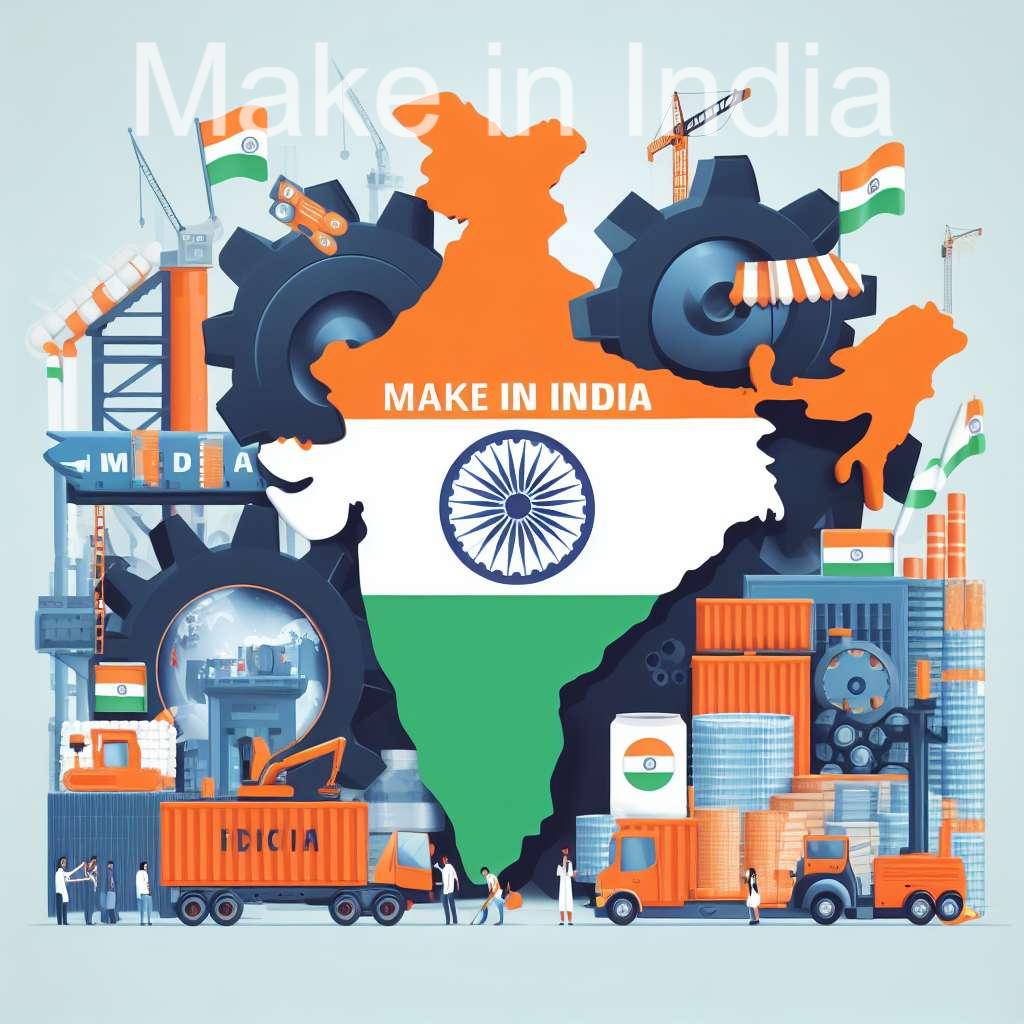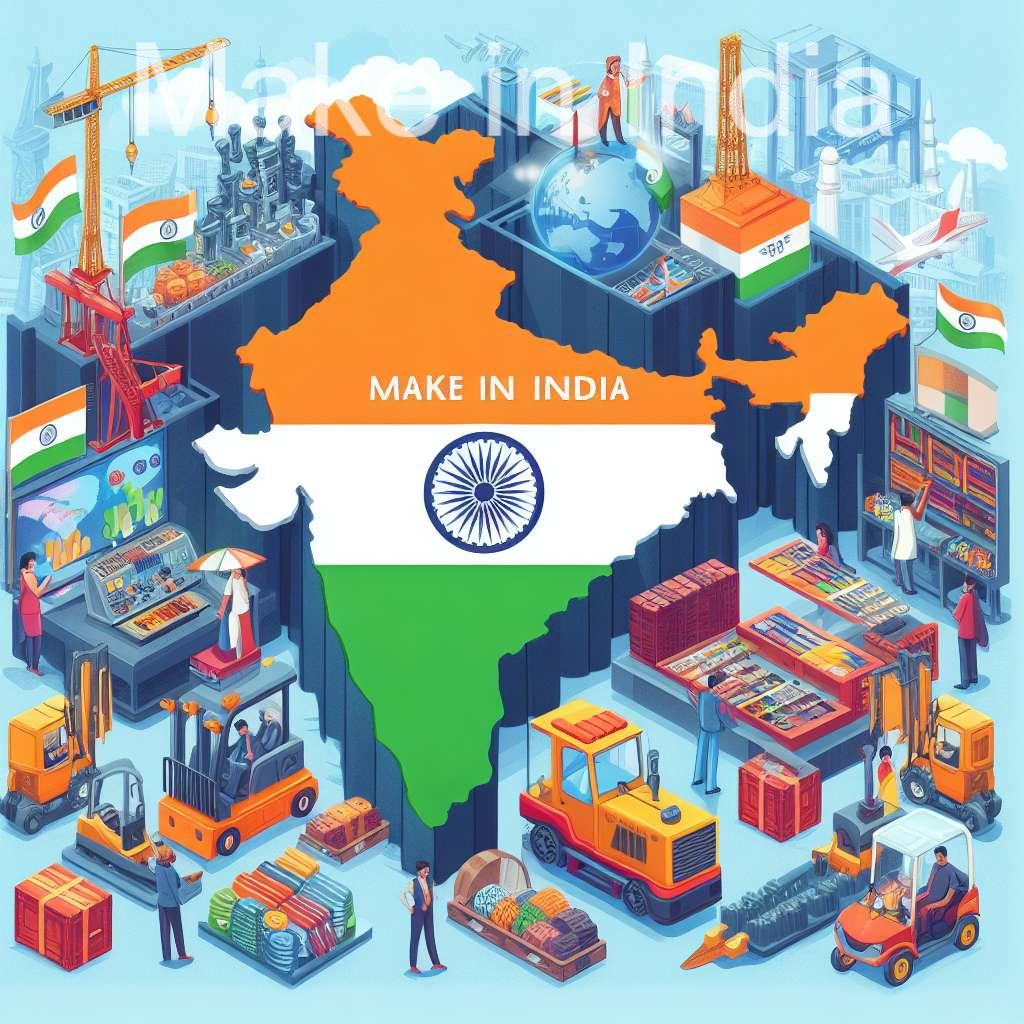Make in India: Boosting Indian Exports through Manufacturing Prowess
The “Make in India” initiative strives to transform India into a global manufacturing hub. While its primary focus lies in attracting Foreign Direct Investment (FDI) and bolstering domestic production, it also holds immense potential to promote exports from India. Here’s how:

1. Enhanced Product Quality and Competitiveness:
- Improved technology and standards: “Make in India” emphasizes the adoption of advanced technologies and international production standards. This leads to better quality products, elevating India’s position in the global market.
- Cost-effective manufacturing: Lower labor costs and abundant raw materials in India allow for competitive pricing of manufactured goods, making them attractive to international buyers.
- Increased diversification: The initiative encourages production across various sectors, from pharmaceuticals and automobiles to electronics and textiles. This diversification offers a wider range of high-quality Indian products for export.
2. Streamlined Supply Chain and Logistics:
- Infrastructure development: Investments in ports, roads, and digital infrastructure under “Make in India” improve connectivity and reduce logistical bottlenecks. This facilitates faster and more efficient movement of goods for export.
- Special Economic Zones (SEZs): SEZs offer streamlined customs procedures, tax benefits, and dedicated infrastructure, creating an ideal environment for export-oriented manufacturing.
- Trade facilitation measures: The government’s focus on simplifying trade regulations and reducing transaction costs further aids exporters in reaching international markets.
3. Brand Building and Market Access:
- Promoting “Make in India” globally: The initiative promotes Indian-made products on the global stage, enhancing brand recognition and trust in Indian manufacturing capabilities.
- Government assistance: Trade fairs, export promotion schemes, and trade agreements facilitated by the government help Indian exporters connect with international buyers and access new markets.
- Leveraging the diaspora network: The large Indian diaspora worldwide can act as valuable brand ambassadors and market connectors, facilitating access to established distribution channels and consumer bases.

4. Creating a Supportive Ecosystem:
- Skill development: “Make in India” focuses on creating a skilled workforce, ensuring manufacturers have access to skilled labor for export-oriented production.
- Entrepreneurship and innovation: Encouraging small and medium-sized enterprises (SMEs) through financial incentives and business support services allows them to contribute to the export basket.
- Research and development: Promoting R&D fosters innovation and the development of high-value products with increased export potential.
However, challenges remain. Bureaucratic hurdles, inconsistent policies, and inadequate access to finance can hinder export efforts. Addressing these challenges is crucial for maximizing the potential of “Make in India” in promoting exports.
Overall, “Make in India” presents a promising path for India to become a significant player in global trade. By leveraging its manufacturing strengths, improving infrastructure, and building a supportive ecosystem, India can transform itself from a primarily import-driven economy to a vibrant exporter of high-quality goods, solidifying its position in the global marketplace.